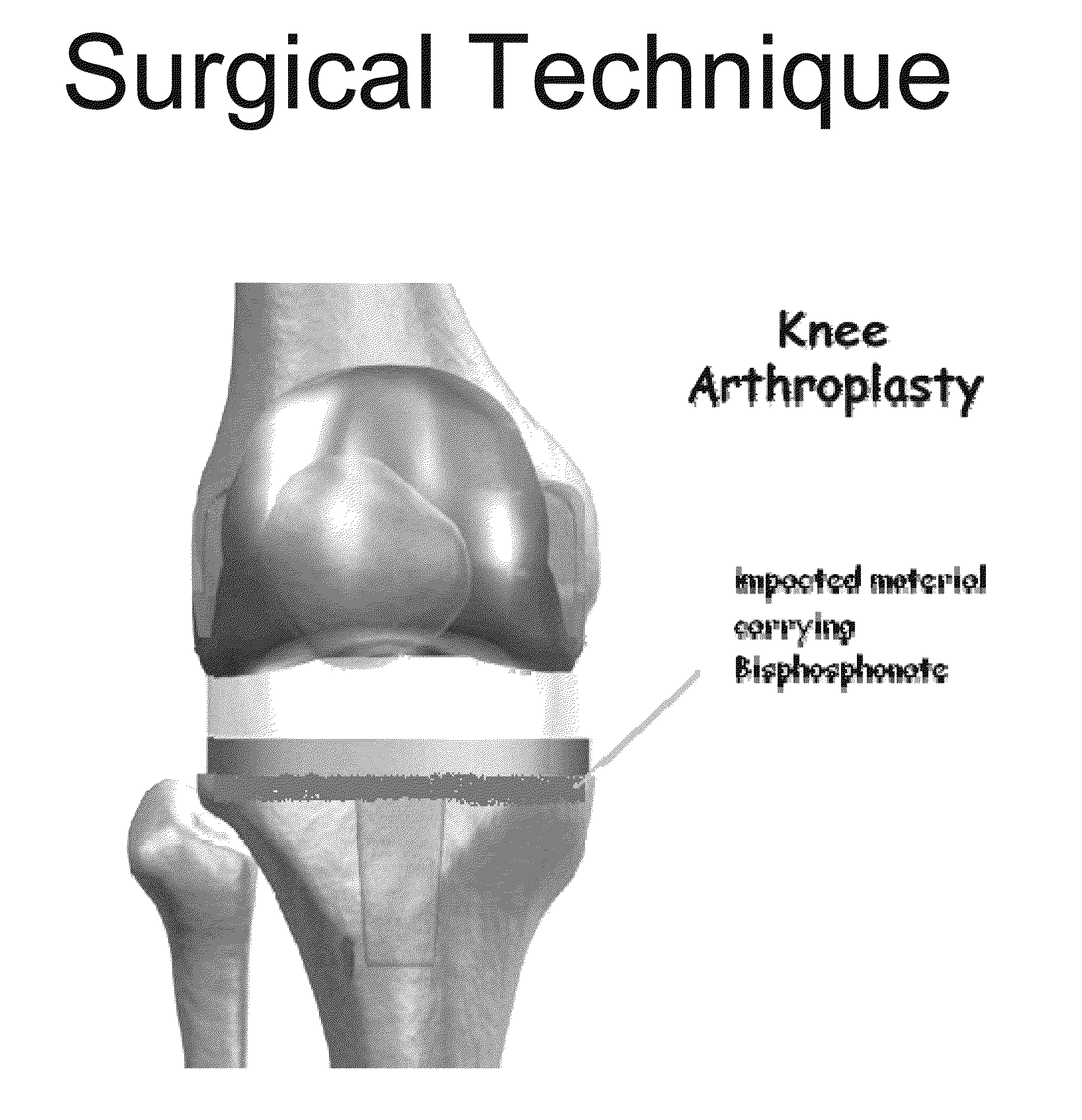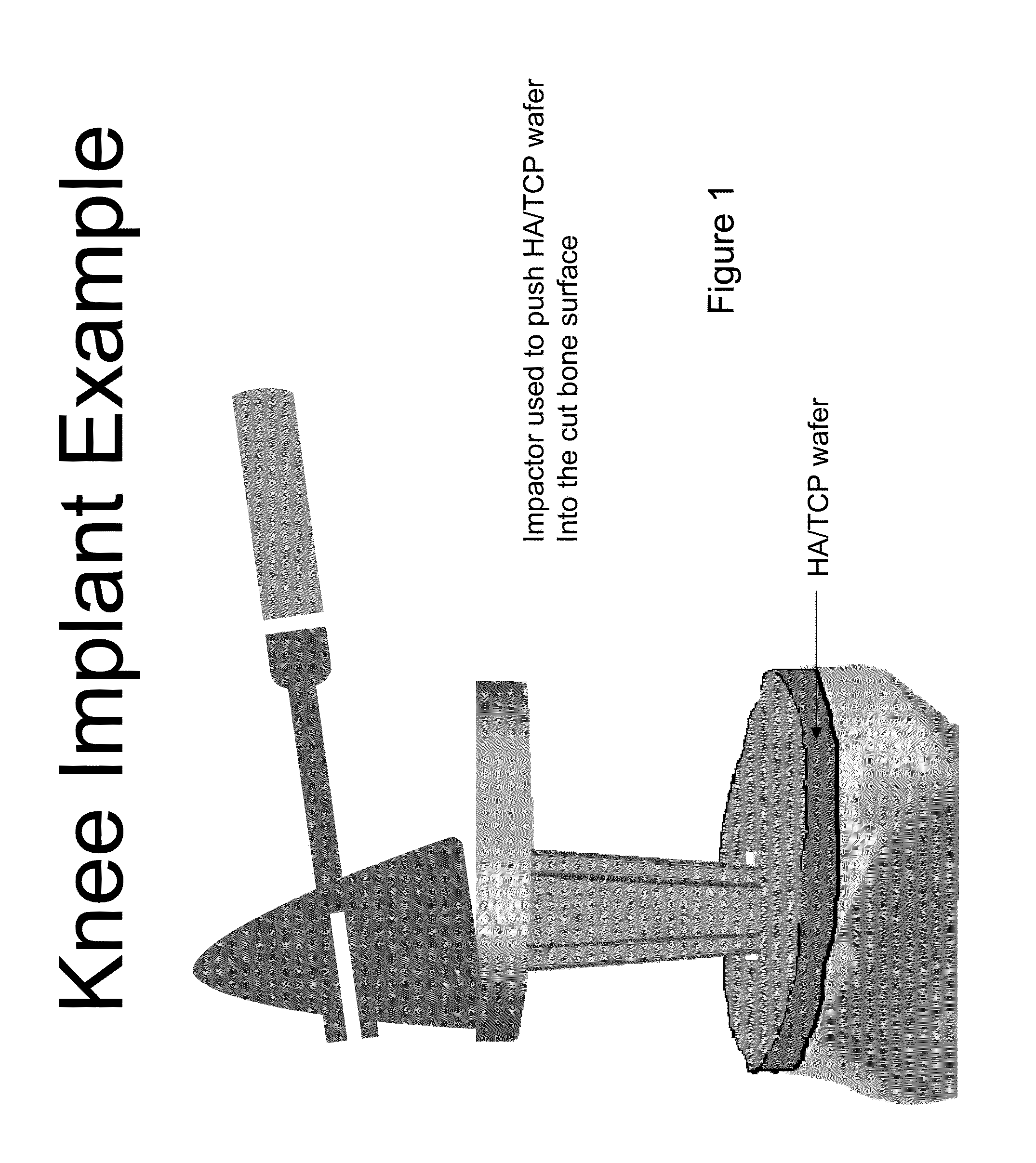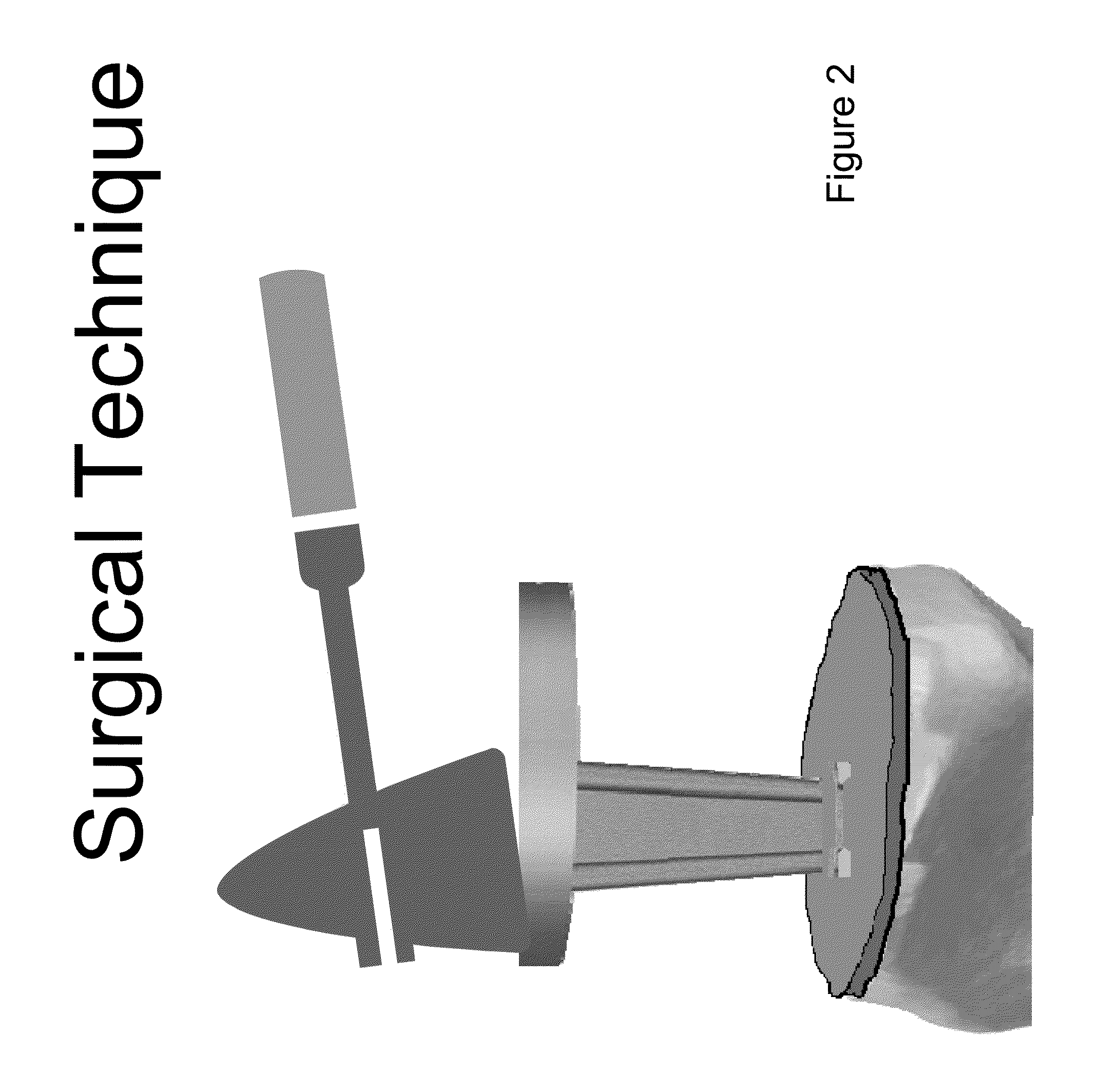Method of delivering a biphosphonate and/or strontium ranelate below the surface of a bone
a technology of strontium ranelate and bisphosphonate, which is applied in the direction of internal osteosynthesis, prosthesis, osteosynthesis devices, etc., can solve the problems of needing follow-up surgery, patient discomfort, and eventual failure of such implants and prostheses, so as to reduce bone resorption and increase bone deposition
- Summary
- Abstract
- Description
- Claims
- Application Information
AI Technical Summary
Benefits of technology
Problems solved by technology
Method used
Image
Examples
example 1
[0047]In preparation for a knee implant, the tibial head is cut to form a tibial plateau adapted to receive a knee implant. A wafer is formed having a height of about 5 millimeters and a shape congruent with that of the tibial plateau. The wafer is composed of an aggregate of particles of a delivery composition containing hydroxylapatite and tricalcium phosphate. The particles are coated with a bisphosphonate and / or strontium ranelate before formation of the wafer and / or the wafer is impregnated with a bisphosphonate and / or strontium ranelate after formation.
[0048]The wafer is placed atop the tibial plateau. An impactor approximately congruent with the tibial plateau is then placed atop the wafer. (FIG. 1.) A hammer is then used to strike the impactor thereby crushing the wafer into particles and delivering the particles, including the bisphosphonate and / or strontium ranelate, to a maximum depth of about 5 millimeters below the surface of the bone. (FIGS. 2-3.) A definitive knee imp...
example 2
[0049]In preparation for the placement of an implant or prosthesis, a hole is prepared for receipt of a screw. A cannulated Screw K-Wire is placed into the bone at the site chosen for the screw. (FIG. 6a.) A hole is then drilled over the wire. (FIG. 6b.) An inserter sleeve of a cylinder inserter (FIG. 7.) containing within it at a first end a solid cylinder a delivery composition containing hydroxylapatite, tricalcium phosphate, and a bisphosphonate and / or strontium ranelate (FIGS. 6e and 8a) is inserted into the hole. (FIG. 6c.) The remainder of the inserter sleeve, e.g., from the proximal end of the cylinder to a second end of the inserter sleeve is filled with an inserter piston. (FIG. 7.) As the inserter piston is held without movement, the inserter sleeve is withdrawn from the hole. The inserter piston is then withdrawn leaving the solid cylinder within the hole. (FIG. 6d.)
[0050]A screw is then inserted and seated into the hole. The mechanical force applied by the insertion and...
example 3
[0051]In preparation for the placement of an implant or prosthesis, a hole is prepared for receipt of a screw as described in EXAMPLE 2. The hole is then filled by injection to a desired depth with a delivery composition containing a bone cement and a bisphosphonate and / or strontium ranelate. (FIG. 10a.)
[0052]A screw is then inserted and seated in the hole. The fins of the screw seal the delivery composition from the surroundings. (FIG. 10b.) As the screw is driven into its final position, the delivery composition is pushed below the surface of the surrounding bone to a maximum depth of about 2 millimeters to about 3 millimeters. (FIGS. 10c-d.)
PUM
| Property | Measurement | Unit |
|---|---|---|
| mean diameter | aaaaa | aaaaa |
| mean diameter | aaaaa | aaaaa |
| depth | aaaaa | aaaaa |
Abstract
Description
Claims
Application Information
 Login to View More
Login to View More - R&D
- Intellectual Property
- Life Sciences
- Materials
- Tech Scout
- Unparalleled Data Quality
- Higher Quality Content
- 60% Fewer Hallucinations
Browse by: Latest US Patents, China's latest patents, Technical Efficacy Thesaurus, Application Domain, Technology Topic, Popular Technical Reports.
© 2025 PatSnap. All rights reserved.Legal|Privacy policy|Modern Slavery Act Transparency Statement|Sitemap|About US| Contact US: help@patsnap.com



